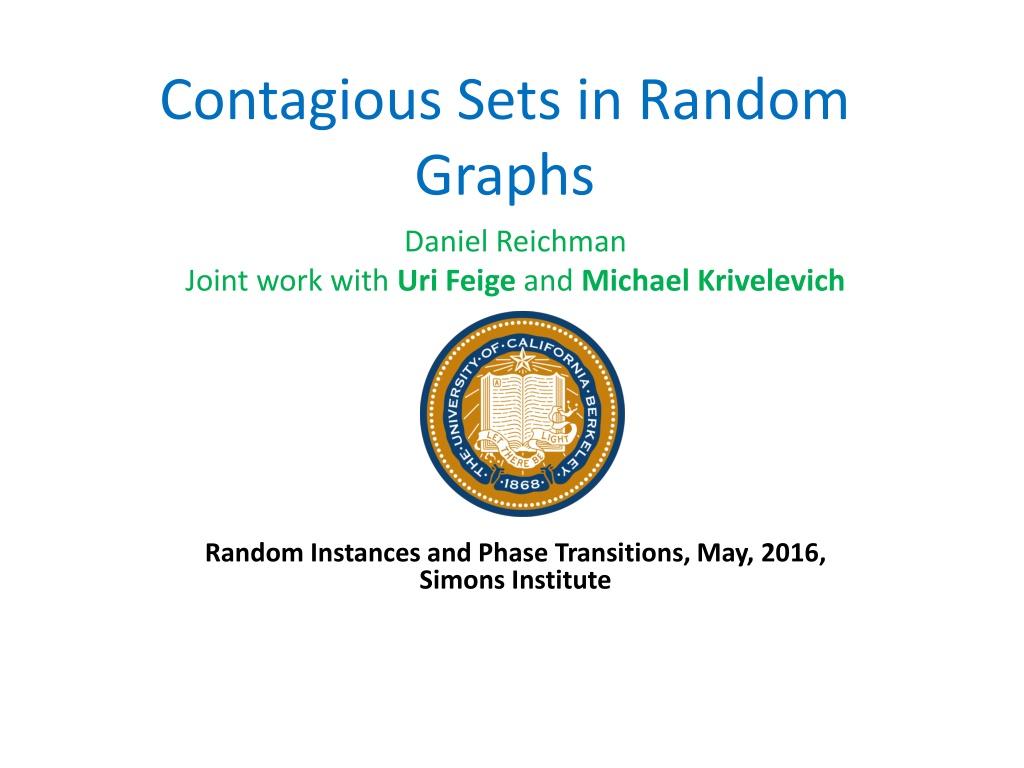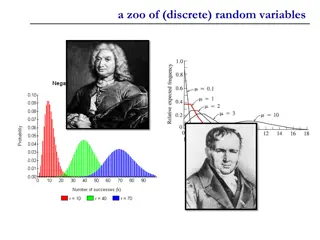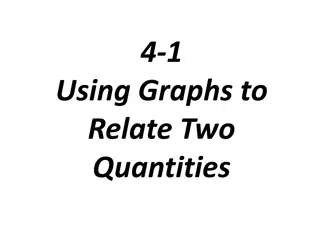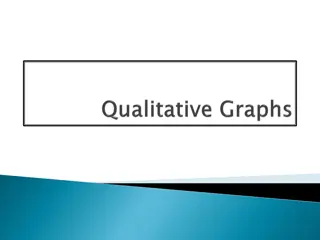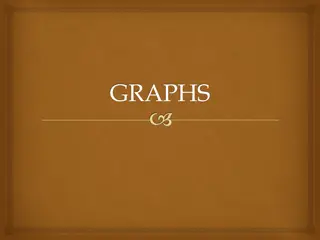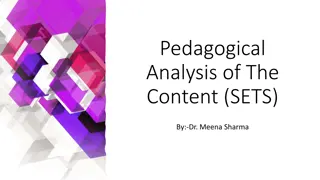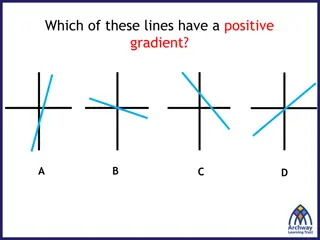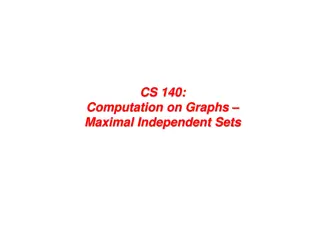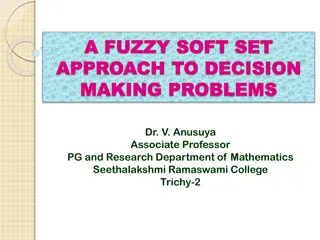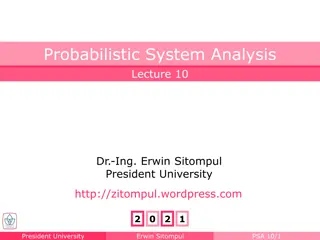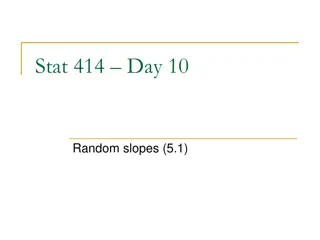Analysis of Contagious Sets in Random Graphs
The research delves into the concept of contagious sets in random graphs, focusing on bootstrap percolation, random activation, historical perspectives, recent developments, and NP-hard problems. It explores factors like the size of contagious sets, speed of activation, and open problems in the field.
Download Presentation

Please find below an Image/Link to download the presentation.
The content on the website is provided AS IS for your information and personal use only. It may not be sold, licensed, or shared on other websites without obtaining consent from the author. Download presentation by click this link. If you encounter any issues during the download, it is possible that the publisher has removed the file from their server.
E N D
Presentation Transcript
Contagious Sets in Random Graphs Daniel Reichman Joint work with Uri Feige and Michael Krivelevich Random Instances and Phase Transitions, May, 2016, Simons Institute
Bootstrap Percolation Undirected graph G=(V,E), Integer r>1. Initial set of active vertices (seeds). Contagious process: inactive vertex infected if it has at least r active neighbors. Progressive
Bootstrap Percolation Contd Contagious set: infects the entire graph. m(G,r) : min size of contagious set. Speed of activation: # iterations until full infection.
Random activation Every vertex active with probability p. P(G,r,p):= probability of complete infection. P1/2:= infp(P(G,r,p)>1/2) Typically Best << random n by n grid: P1/2= 2/(18 log n)(Holoroyd, 03) m(G,2)=n (Folklore, Balogh and Pete, 98)
Some history Introduced (Chalupta, Leath and Reich, 79) 88 and onward : Lattices (Aizenman, Lebowitz; von Enter; Cerf, Manzo; B,B,D-C,M) 06 and later: Random graphs (Balogh, Pittel; Janson; Amini, Fountoulakis; Amini, Fountoulakis , Panagiotou), Infinite trees (Balogh, Peres, Pete). BP (07), J (09): Threshold for G(n,d) 1/(2d2)
More recent After 08: Study of m(G,r) (Balogh, Pete; Chen; Coja-Oghlan, Feige, Krivelevich,R; Guggiola, Semerjian; Morris; Noel, Morrison) 12 and later: speed of activation (Bollob s,Holmgren,Smith, Uzzell; Bollob s,Smith, Uzzell; Przykucki) Extremal questions: Freund, Poloczek, R.
Our work Study m(G,r) for the Erdos-Renyi Random graph G(n,p). Test case: NP-hard problem on G(n,p) Threshold for m(G,r)=r speed of activation. Many open problems
NP-hard problems on G(n,p) (Frieze Mcdiarmid) Constant factor approximation whp (MUCH better than worst-case) Algorithms: combinatorial Asymptotic bounds extend to pseudo-random graphs (Krivelevich, Sudakov). Our case: similar (Coja-Oghlan, Krivelevich, Feige ,R)
Bootstrap Percolation in G(n,p) Thm: Janson, uczak, Turova, Vallier (2012): (1 )log n p n + 1 1/ r n Critical size for complete infection: 1 1 r ( 1)! r r 1 r = 1 a c np m(G,2) n(1+ )/(2d2) Speed: O(log log n)
Contagious sets in G(n,p) log 1, n n = Thm: n n d d p d np 12 log n ( ,2) m G 2 2 6 lg d d Upper bound: Constructive Constant r: n ( , ) m G r /( 1) r r log d d
Threshold for m(G,r)=r n ( , ) m G r assuming /( 1) r r log d d 1 r loglog log 1 n r p1<< 2 1/ r n n p2=Cn-1/r , random set r-set is contagious with pr f(C)>0 (JLTV). What happens for p1 <p<p2??
Threshold for m(G,r)=r contd Thm: there exist 0<c<C s.t. w.h.p. c ( , ) m G r p r 1 1/ r r ( log n ) d C = ( , ) m G r p r 1 1/ r r ( log n ) d
Upper bounding m(G,2) in G(n,p) Activate n/d2 vertices
Excited Vertices Excited vertex: with active neighbor. Excited Connected components susceptible to epidemic!
Upper Bound in G(n,p) Goal: infect n/d2vertices activating a<< n/d2 vertices. Activate an arbitrary set A. |A|=a Expose edges incident to A. | (A)| ad/2. W.l.og. | (A)|=ad/2
Upper Bound Contd G( (A)) distributed as G(ad/2,p) Component of size k of excited vertices Infect component by activating single vertex! A m vertices in cc of size k infected at cost m/k
Upper Bound in G(n,p) Activate an arbitrary set A: |A|=a=n{Clog log d/(d2log d)} # of vertices lying in cc of size k=C log d/log log d at least n/d2 Can be infected by activating (n/d2)/k=O(n{log log d/(d2log d)}) vertices!
UB contd Activate vertex in every component of size k At least n/d2vertices in (A) infected: R C= V\(AU (A)) A R
Summing up No edges in E(R,C) exposed. Neither edges in C. JLTV almost all of C infected whp. C R
Improving to m(G,2)O(n/(d2log d)) Activate in 1 i log log d rounds (Start with n/(d2log d)) Ci: vertices infected in round i Consider all cc of (Ci) decreasing by size. until 2i/(d2log d) vertices accumulate.
Lower Bound G(n,p:=d/n). Contagious set of size s:=n/6d2log d For t:=n/3d2exists a set of size t spanning at least 2(t-s) edges. Union bound no such set whp.
Threshold for m(G,2)=2 c = G(n,p:=d/n). Contagious set of size r subgraph of size t+r spanning 2t edges. t=log n Such subgraph exists with probability at most ( 2) /2 2 2 t t p log n d + 2 n n t ( ) t + = 2 2 2 2 log t t n / ( ( e t 2) ) (25 ) (1) p n en t p n c o
Threshold for m(G,2)=2: contd Goal: p=1/(nlog n)1/2 Infect b log n vertices by activating only 2 vertices!
Threshold for m(G,2)=2 k=blog n. Fix u1,u2. Partition V to k-2 sets. Search for vertex uiin ith set infected by {u1, ,ui-1}. Failed-remove {u1, ,ui-1}. Iterate n/(2k) times
Threshold for m(G,2)=2 U= {u1, ,uj-1}: Pr(fixed vertex infected by U) Pr(Bin(j-1,p)=2):=qj pj Pr(Bin(n/(2k), qj)>0) Pr[success in iteration]=p3 p4 pk klog n/n # iterations n/(2k) one iteration succeeds.
Number of generations Until k vertices infected: random dag on u1, ,uk. uiconnected to 2 random vertices in {u1, ,ui-1}. Longest path O(log k). Once k vertices infected: JLTV number of generation O(log log n)
Open Problem I Derive an upper bound on the number of contagious sets in a d-reg graph. This number is at least d r + /( 1) n d + 1 Complexity of approximating the number of contagious sets ?
Open Problem II Number of generations over grids for supercritical probability is open. Mixing /hitting time machinery?
Open Problem III Prove/disprove: (n,d, d/2) graph m(G,2) O(n/d2log d) - Known: Absence of 4-cylces O(n log d/d2) Prove/disprove: threshold O(1/d2) Known: Holds for O(d1/2) Every set of size Cn/d is contagious!
